- Clone
- B20.6 (See other available formats)
- Regulatory Status
- RUO
- Other Names
- T cell receptor Vβ 2 [vb2]
- Isotype
- Rat IgG2a, κ
- Ave. Rating
- Submit a Review
- Product Citations
- publications
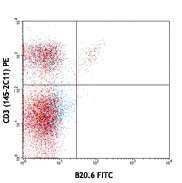
-

C57BL/6 mouse splenocytes stained with CD3 (145-2C11) PE and B20.6 FITC
| Cat # | Size | Price | Quantity Check Availability | Save | ||
|---|---|---|---|---|---|---|
| 127906 | 250 µg | $233 | ||||
The B20.6 antibody recognizes V beta 2 TCR of all strains tested. V beta 2 bearing T lymphocytes are clonally eliminated in MHC class II I-E expressing mice neonatally infected with MMTV virus through milk feeding.
Product DetailsProduct Details
- Verified Reactivity
- Mouse
- Antibody Type
- Monoclonal
- Host Species
- Rat
- Immunogen
- Soluble TCR from mouse CTL clone CW3/1.1
- Formulation
- Phosphate-buffered solution, pH 7.2, containing 0.09% sodium azide.
- Preparation
- The antibody was purified by affinity chromatography, and conjugated with FITC under optimal conditions.
- Concentration
- 0.5 mg/ml
- Storage & Handling
- The antibody solution should be stored undiluted between 2°C and 8°C, and protected from prolonged exposure to light. Do not freeze.
- Application
-
FC - Quality tested
- Recommended Usage
-
Each lot of this antibody is quality control tested by immunofluorescent staining with flow cytometric analysis. For flow cytometric staining, the suggested use of this reagent is ≤1.0 µg per million cells in 100 µl volume. It is recommended that the reagent be titrated for optimal performance for each application.
-
Application References
(PubMed link indicates BioLegend citation) -
- Necker A, et al. 1991. Eur J. Immunol. 21:3035
- Hodes RJ, et al. 1993. J Immunol 150:1422
- RRID
-
AB_1227782 (BioLegend Cat. No. 127906)
Antigen Details
- Structure
- TCR has a two chain structure, consisting of alpha and beta chain. It belongs to Ig superfamily.
- Distribution
-
On a subset of T cells
- Function
- Recognize MHC/peptide complex on the antigen-presenting cells.
- Interaction
- Associate with V alpha and CD3 complex to form TCR complexes expressing on cell surface.
- Ligand/Receptor
- TCR recognizes MHC/peptide complex
- Cell Type
- T cells
- Biology Area
- Adaptive Immunity, Immunology
- Molecular Family
- TCRs
- Antigen References
-
1. Kubo RT, et al. 1989. J. Immunol. 142:2736
2. Necker A, et al. 1991. Eur. J. Immunol. 21:3035 - Gene ID
- 21577 View all products for this Gene ID
- UniProt
- View information about TCR Vbeta2 on UniProt.org
Related Pages & Pathways
Pages
Related FAQs
Other Formats
View All TCR Vβ2 Reagents Request Custom Conjugation| Description | Clone | Applications |
|---|---|---|
| Biotin anti-mouse TCR Vβ2 | B20.6 | FC |
| FITC anti-mouse TCR Vβ2 | B20.6 | FC |
| PE anti-mouse TCR Vβ2 | B20.6 | FC |
| Alexa Fluor® 647 anti-mouse TCR Vβ2 | B20.6 | FC |
Customers Also Purchased

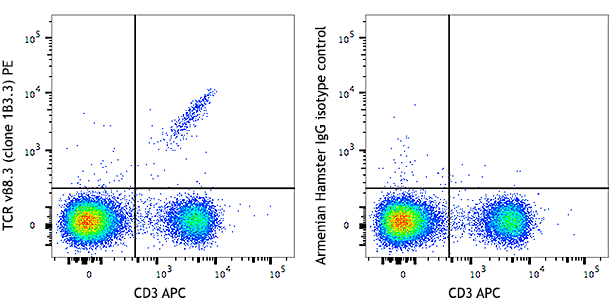
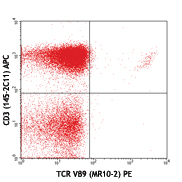
Compare Data Across All Formats
This data display is provided for general comparisons between formats.
Your actual data may vary due to variations in samples, target cells, instruments and their settings, staining conditions, and other factors.
If you need assistance with selecting the best format contact our expert technical support team.
-
Biotin anti-mouse TCR Vβ2
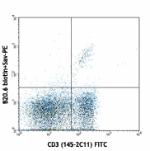
C57BL/6 mouse splenocytes stained with CD3 (145-2C11) FITC a... -
FITC anti-mouse TCR Vβ2

C57BL/6 mouse splenocytes stained with CD3 (145-2C11) PE and... -
PE anti-mouse TCR Vβ2
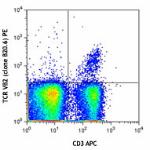
C57BL/6 mouse splenocytes were stained with CD3 APC and TCR ... 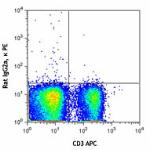
-
Alexa Fluor® 647 anti-mouse TCR Vβ2
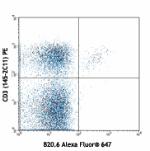
C57BL/6 mouse splenocytes stained with CD3 (145-2C11) PE and...
 Login/Register
Login/Register 









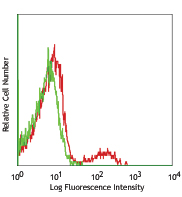



Follow Us